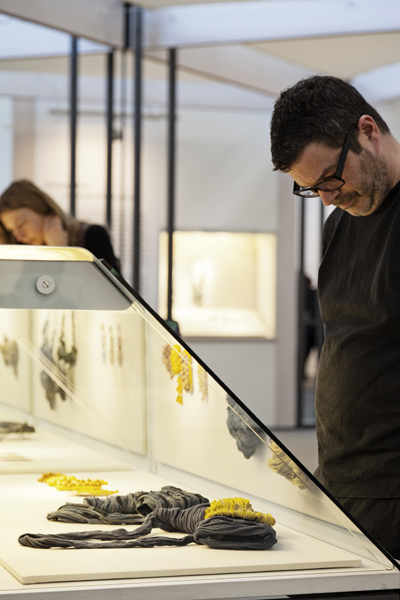
The exhibition has long been considered to be the jewelry equivalent of Michelin stars. Clearly, the accolade signals a form of artistic excellence and sets a standard for the field on a global level. But like the Michelin stars system, it is often decried as a self-perpetuating and monopolistic form of authority over what excellence, in fact, amounts to.
Yet, little is ever written about the delicate balancing act jurors need to perform: to weave together a selection out of submissions they have no control over and to somehow make the resulting exhibition both personal and representative of the field at large.
We were curious about the whole process and so conducted an interview with Jorunn Veiteberg, Schmuck’s latest juror, both before and after her selection. Jorunn is a Norwegian critic, curator, and craft historian with an extensive knowledge of craft history and theory. First, we wanted to know what she expected a few days before meeting Wolfgang Lösche and Eva Sarnowski and conducting the selection itself, and finally, what her assessment of the exhibition was just after she saw it in Munich.
Ben Lignel, Editor
Part One: October 2013
Benjamin Lignel: Before you choose which pieces will be part of 2014’s Schmuck exhibition, you yourself were chosen by the Handwerksmesse team to be this year’s juror. How do you think you were selected, and what particular qualities do you bring to the selection process?
Jorunn Veiteberg: I don’t know, but Wolfgang Lösche, who invited me to be the juror, knows well my great interest in contemporary jewelry. I was in the jury together with him of the Danner-Preis in 2011. This is a prize for applied artists in Bayern, and jewelry is a dominant medium. I have also been a jury member of Talente twice, which is also part of the Handwerksmesse. I don’t bring making skills, but I have many years of experience in looking, describing, and evaluating jewelry from the perspective of examiner, writer, and juror.
The single-juror process was introduced by Peter Nickl, Wolfgang Lösche’s predecessor, to ensure that the selection is both singular and subjective. What do you think are the advantages and the drawbacks of such a format? Does it free you from the constraint of representing all the many facets of contemporary jewelry?
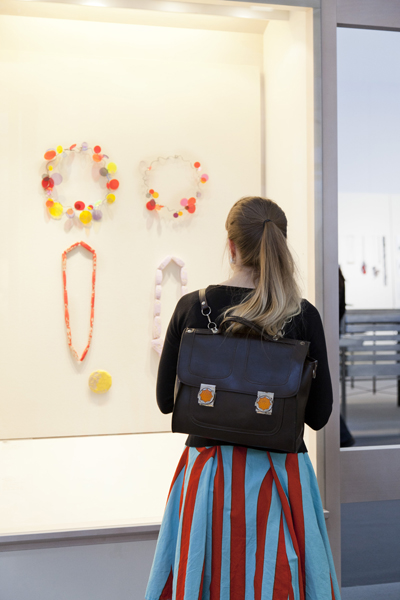
At the time you are receiving these questions, you still have not seen any of the pre-selected portfolios. What challenges do you expect this selection will bring, and what criteria for selection do you bring to the process?
Jorunn Veiteberg: My biggest worry is that I have to do the selection based on slides. I don’t even know if I will be told the name of the artists. Photos can be very seductive and misleading. It is difficult to understand size, weight, etc. I’m afraid of making bad choices based on misreading photos. I have not defined any criteria in advance. But I have been asked to go for “high quality.” I will try to be as open minded as possible. But, perhaps I have a wider understanding of what quality can be than usual? For me, quality can also be about content, not only craftsmanship.
You have a particular interest in how makers articulate their relationship to culture and history. Meanwhile, application forms leave very little room for contextualization of the work. When you review the applications, you will be looking at images, titles, and a simple list of materials and processes. How do you feel about this?
Jorunn Veiteberg: I don’t belong to the school that thinks artwork speaks for itself. Knowing so little about the work is what makes this exercise so challenging and the risk of making failures so big. I might have an experienced eye, but I don’t consider myself a connoisseur. So, I would have expected an artist statement to follow the piece, but you mean there is no room for that?
Schmuck does not accept installations or photography, yet a growing number of contemporary makers are pushing their practices toward these (and other) media. Do you think that the restriction imposed on applicants will eventually undermine the relevance of this competition?
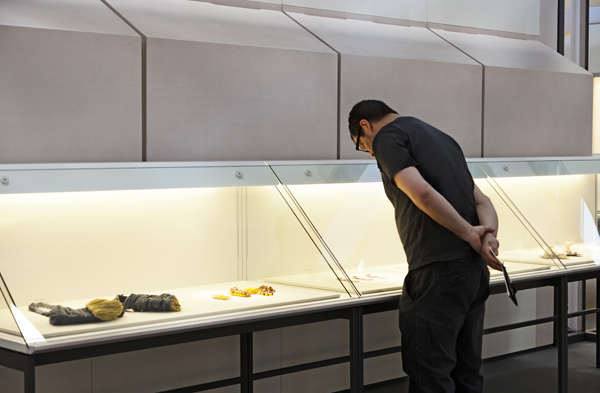
Part Two: March 2014
Benjamin Lignel: You came back from Munich a few weeks ago, and I am sure that the first thing you went to see was the Schmuck pavilion. As you made your selection based on slides, you, too, were “discovering” the Schmuck exhibition. How different from your expectations was the actual exhibition?
Jorunn Veiteberg: My biggest surprise was the size of the pieces. Many were much bigger than I had imagined. But mostly, the exhibition confirmed the impressions I got from looking at photos of the individual pieces. I also strongly felt that there was “one eye” behind the show, which was a positive surprise, too.
My understanding is that the jewelry maker Alexandra Bahlmann is responsible for arranging the juror’s selection in the pavilion. Did you participate in the display decisions in any way? Were you surprised or inspired by her choices and the dialogues she staged?
Jorunn Veiteberg: I had nothing to do with the installing of the exhibition, but in doing the selection of works, I thought about the fair and the vitrines I knew they were going to be presented in. I tried to work with and not against that situation, but I didn’t make any suggestions. I was very impressed by the job Alexandra Bahlmann did. Many of the juxtapositions she made worked very well together both aesthetically and conceptually. In a group exhibition with so many different participants, there will always be some pieces that don´t fit well together, but I found her choices very sensitive and in tune with my own thoughts.
Since visitors to the exhibition do not know what you chose from, it is difficult for them to get a sense of your choices. For that reason, I imagine that the juror rarely gets feedback and criticism on his or her selection. Is this the case?
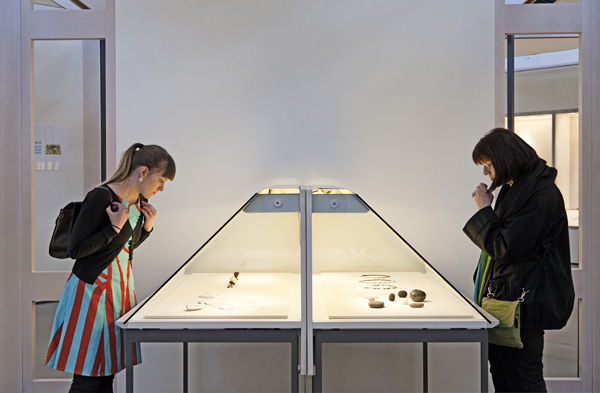
You remarked (in answer to my first batch of questions) that selecting from applications is not the same thing as curating. Can you explain the difference, and give us an example of a curated show you particularly liked?
Jorunn Veiteberg: Curating is, of course, many different things, but when I take on a commission as curator, I want to decide who to invite and how to present the work. And I would develop a framework or a concept or use the exhibition to raise some questions. This year, I think you could say that the many exhibitions were less a matter of curatorial choice than opportunity or friendship, and that very few exhibitions were actually “curated.” The good exceptions were the professionalism of the solo exhibitions in Wittenbrink´s two galleries (Reinhold Ziegler and Warwick Freeman) and the personal choices made by Karl Fritch and Warwick Freeman of jewelry from New Zealand at the Handwerkskammer. When it came to how to display jewelry in new ways, the most ambitious solutions were, in my mind, Helen Britton’s exhibition at Galerie Spektrum and the magical world David Bielander created at Artothek. To make an exhibition with jewelry is very demanding because it often needs vitrines, tables, shelves—in short, you have to think through issues of display. The students from the Media, Arts, and Design (MAD) faculty in Hasselt also did a great job in this respect with their “Mad about Jewelry” buttons and wearable display boxes.
I am hearing a few people complain that the field—whose members at all levels are overwhelmingly female—favors men. Do you agree that there is a gender bias in the field? If so, is this something you thought about when making your selection?
Jorunn Veiteberg: In Schmuck 2014, there was an overrepresentation of women artists. I consider practicing gender equality a criteria of quality in my own work. That means that I will sometimes favor men in fields where women are the majority and the opposite in fields where men are the majority. I’m convinced that, in the long run, it will serve the jewelry field best if we keep a gender balance, and I have no problem in thinking about gender as a criteria in the selection process to keep up this aim.
I know that you are working on a number of writing projects. Can you tell us a little bit about these projects, why you chose them, and how you see your role as a craft historian?
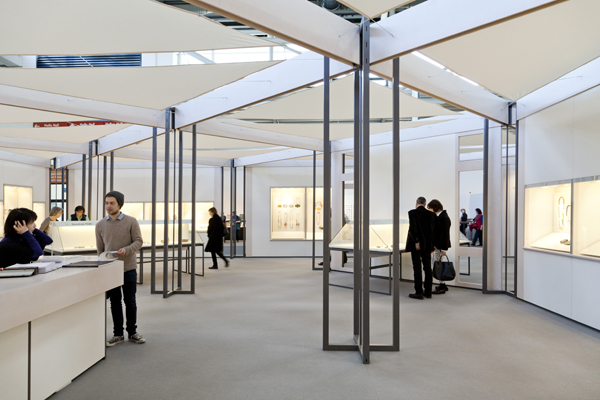
Your last comments suggest that writing on history is also a matter of personal choices—who you pick, the writing genre that you choose. What distinction do you make between the role of the historian and that of the critic? Do you think that critical writing, of the kind that contextualizes but also voices opinion about work, is a useful format?
Jorunn Veiteberg: Definitely yes to the last question. In writing about contemporary craft and art, it is impossible to make a clear distinction between the critic and the historian. The closer I get to the present, the more the terrain changes from being history to being something closer to autobiography. I have witnessed the events I describe, experienced the discussions which they occasioned, and I have taken part as juror, curator, and educator as well as writer. This has to be reflected in my writing also because being involved has certainly affected my view of the historical terrain.




